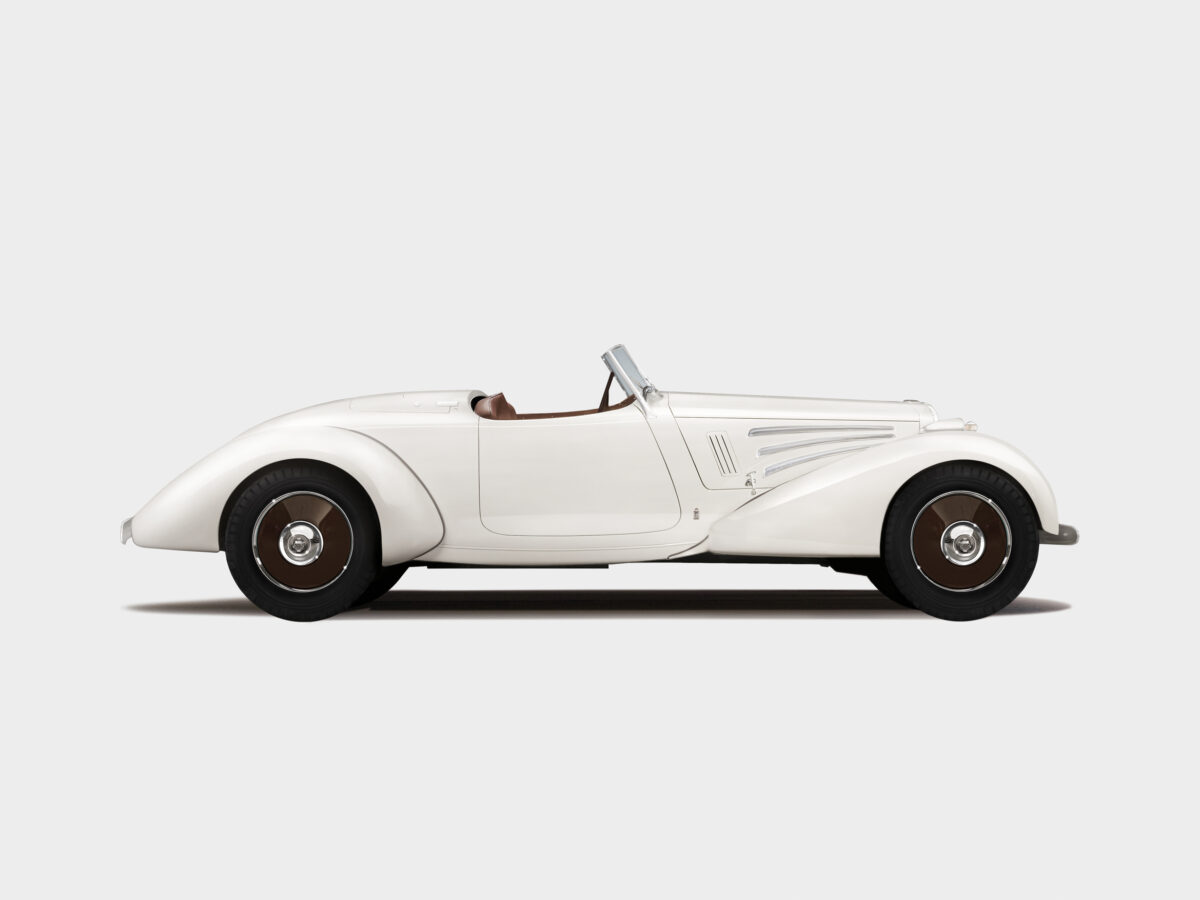Lancia – Astura (1935)
Details
- Vehicle Type:
- Roadster
- Coach Builder:
- Pinin Farina
- Cylinders:
- V8
- Engine CC:
- 2972
- Entrant
- Piet Janssen (NL)
Class B
SHAPED BY THE WIND: THE EVOLUTION OF AERODYNAMICS
Before the Second World War, the Italian marque Lancia – now almost extinct – repeatedly attracted attention with the prowess of its innovative engineering designs. They often proved to be revolutionary and this immortalised the marque’s reputation. The Astura was produced from 1931 to 1939 and it replaced the Lancia Dilambda, powered by a 4 litre V8 engine, from 1935 onwards. Actually, the Lancia Lambda was the real predecessor and this was the first car in the world to be designed with the revolutionary self-supporting chassis and body construction in 1922. The Lambda was replaced by two models, the cheaper Artena and the more upmarket, luxuriously outfitted Astura. The new Lancia Astura was powered by a 2.6 litre narrow-angle V8 engine and thanks to the characteristic small angle between the cylinders, the engine has the appearance of a compact four-cylinder. The car shown here is one of the third series introduced by 1934. The engine had been enlarged to 2.9 litres and the car also included power-assisted brakes. Surprisingly, by contrast with the Lambda the Astura once again featured a traditional chassis-on-frame construction but this allowed customised bodies to be built on the chassis again. These mostly came from the renowned Italian coachbuilders such as Pinin Farina, Castagna, Stabilimenti Farina or Touring. The illustrious commissions meant that the Lancia was a regular guest at Concours d’Élégance events in the 1930s. The Lancia Astura often earned a top podium place, as is also the case today. This beautiful roadster was bodied by Pinin Farina and delivered new to Switzerland. The fabulous specimen remained in Switzerland for more than 50 years before it was sold to the famous Rosso-Bianco collection of sports cars located in Germany. It recently underwent a lengthy restoration over a period of ten years during which the sportster was returned to its original colour combination. When the production of the Astura ceased in 1939, some 2,900 examples had been built in four different series.
